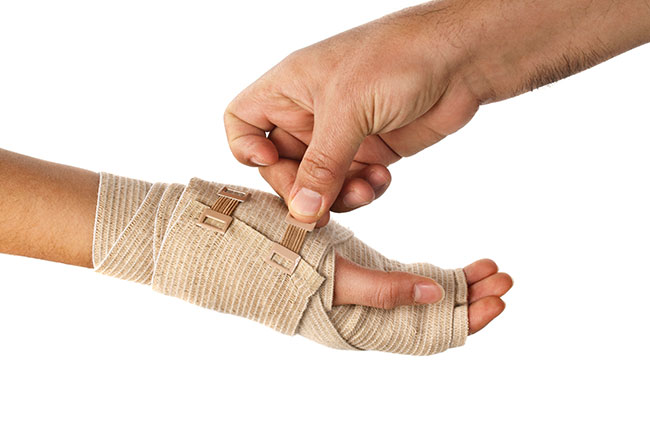
Features
Landscaping
Health and Safety: Know the signs of repetitive strain injury
February 19, 2021 By CCOHS
 Repetitive strain injury can be painful. Photo: Getty Images/Mehmet Hilmi Barcin
Repetitive strain injury can be painful. Photo: Getty Images/Mehmet Hilmi Barcin Whether you work in groundskeeping, landscaping, gardening or other outdoor work, your job likely involves performing some tasks over and over again. This could put you at risk of developing a repetitive strain injury (RSI).
RSI (also known as musculoskeletal disorders) is a general term used to describe a variety of painful injuries that affect tendons, tendon sheaths, muscles, nerves, joints, and other soft tissues. They cause persistent or recurring pain most commonly in the neck, shoulders, forearms, hands, wrists, elbows, and lower limbs.
Repetitive strain injuries are a serious workplace health concern, causing pain and suffering for many workers. These injuries place economic burdens on society in lost productivity, compensation costs and health care costs. Musculoskeletal disorders are the most frequent type of lost-time injury and the single largest source of lost-time costs in Canada. According to the Association of Workers’ Compensation Boards of Canada (AWCBC), in 2018 more than 9,600 lost time claims were reported due to musculoskeletal diseases and disorders.
Causes
So how do these repetitive strain injuries happen? They are often caused by movements that we naturally make every day – movements such as gripping, holding, bending, twisting, clenching and reaching. While not necessarily harmful on their own, the continual repetition of these movements over time can be harmful to workers. These movements can be particularly hazardous when they involve the same joints and muscle groups over and over, when performing the same motions too quickly, and for too long. As a result, groundskeepers and other outdoor workers may experience soreness and pain in their hands, wrists, shoulders or back.
There are other work factors that may contribute to injuries, such as working in an awkward posture, fixed body positions, and excessive force concentrated on small parts of the body such as the hand or wrist. Lifting heavy loads improperly, or a fast pace of work with insufficient breaks or recovery time can also be contributing factors.
Work involving movement repeated over and over can be very tiring because the worker doesn’t have time to fully recover in the short periods between movements. Work pace determines the amount of time available for rest and recovery of the body between cycles of a task. The faster the pace, the less time is available for rest and the higher the risk for developing an injury. Eventually, it takes more effort to perform the same repetitive movements. When the work activity continues despite pain or fatigue, injuries can occur.
Stress levels increase when workers have no control over the timing and pace of work. In turn, these higher stress levels can lead to muscle tension, causing fatigue and increased risk for repetitive strain injuries.
Symptoms
Pain is the most common symptom associated with repetitive strain injuries. Symptoms may vary, but often include joint stiffness, muscle tightness, redness and swelling of the affected area. Some workers may also experience sensations of “pins and needles,” numbness, skin colour changes, and decreased sweating of the hands. Symptoms usually develop gradually, and the injury may progress in stages, ranging from mild to severe, eventually causing longer periods of pain. Eventually, without treatment, the symptoms can become constant and affect workers’ ability to perform their job or even light duties. At this stage the condition may be irreversible.
Not everyone goes through these stages in the same way. However, the first feeling of pain is a signal that the muscles and tendons should rest and recover. Otherwise, an injury can become longstanding, and sometimes, irreversible.
Prevention
Prevention measures can include providing adequate job design, including scheduled breaks, well-designed and comfortable equipment and tools, and training in awareness of how injuries occur and proper lifting procedures.
The most effective solutions are those that eliminate hazards at the source. Employers should focus on avoiding repetitive patterns of work through job design changes or by mechanizing tasks, where possible.
Because repetitive strain injuries develop slowly over time, workers should be trained to understand what causes these injuries, how best to prevent them, and how to recognize the early signs and symptoms.
The earlier workers recognize symptoms, the quicker they and the workplace can respond to them.
Otherwise, an injury can become chronic, and even irreversible.
The Canadian Centre for Occupational Health and Safety (CCOHS) promotes the total well being of workers in Canada by providing information, training, education, systems and solutions that support health and safety programs and injury and illness prevention.
www.ccohs.ca
Print this page